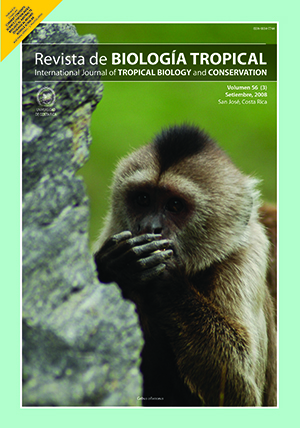Abstract
Captivity represents an extreme situation for primates, especially for those with large home ranges, and its effect on their behavior might be considerable. The Wedge-capped Capuchin Monkey Cebus olivaceus is the most common primate in Venezuelan zoos. To estimate the effect of confinement on C. olivaceus behavior, we analyzed the social behavior of three groups that differed in captivity conditions, in zoological exhibits in Caracas (Caricuao, Parque del Este, El Pinar). Caricuao’s group moved freely over a non-fenced area of 15 ha, Parque del Este’s and El Pinar’s groups lived in relatively small outdoor enclosures. Social behaviors were described using focal-animal sampling, group scans and ad libitumsampling. The frequency, duration and time devoted to each behavior (per focal period per individual) were estimated. Relative dominance between pairs of individuals was established as well as affiliative associations. The repertory of social behaviors was similar between groups and to which has been observed in nature, but the duration and frequency of affiliative and agonistic interactions differed between groups. Affiliative behaviors were less frequent but longer in Caricuao than in the other two groups, while agonistic behaviors were more frequent in El Pinar and Parque del Este. Differences between groups are explained by variation in captivity conditions. We suggest that confinement generates social tension and favors agonism, while affiliative encoun-ters help reduce this tension. On the other hand, differences in agonism between captive and natural groups may result form prolonged association, restrictions to keep optimal spacing or leave the group. All groups had some social structure (e.g., dominance ranks, association and repulsion between individuals) but the social dynamic was partly disrupted. Dominance ranks were not clear throughout the group, the top male was not dominant over the top female, dominant individuals did not interact affiliatively more than other individuals, and females did not affiliate frequently with other females. All of these observations are contrary to which has been observed in nature.As a whole, C. olivaceus tolerates captivity well because its behavioral repertoire is similar to that in natural conditions, and abnormal or undesirable behaviors (e.g., self-mutilation, stereotyped actions), were not observed. Nonetheless, there is an effect of captivity, reflected in a disruption of the social dynamic.
Comments

This work is licensed under a Creative Commons Attribution 4.0 International License.
Copyright (c) 2008 Revista de Biología Tropical






